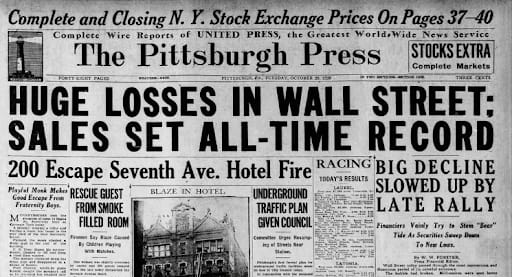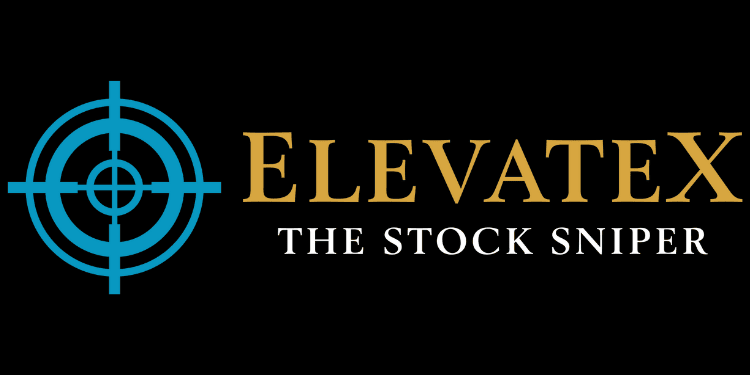- Live Life Grow Wealth
- Posts
- 📊Series 7 Day 2: Reading Financial Statements — The 3 Reports You Must Know
📊Series 7 Day 2: Reading Financial Statements — The 3 Reports You Must Know

Today’s Headline
📊 Series 7: Understanding Company Fundamentals
📊 Day 2: Reading Financial Statements — The 3 Reports You Must Know
When I first started investing, I used to skip the “boring” stuff. I’d look at a company’s stock chart, maybe check some news, and make my decision.
But as time went on, I realized that the real secrets to a company’s strength aren’t found in headlines or share prices. They’re hidden inside something called financial statements — the company’s official scorecards.
If you want to invest like a pro, this is where you need to start.
Today, I want to walk you through the three reports every investor must know — what they are, why they matter, and how to read them like a business owner instead of a speculator.
“Want to own a piece of a multi-million-dollar masterpiece without buying the whole painting? Discover how Masterworks is turning blue-chip art into an investable asset class.”
Crash Expert: “This Looks Like 1929” → 70,000 Hedging Here
Mark Spitznagel, who made $1B in a single day during the 2015 flash crash, warns markets are mimicking 1929. Yeah, just another oracle spouting gloom and doom, right?
Vanguard and Goldman Sachs forecast just 5% and 3% annual S&P returns respectively for the next decade (2024-2034).
Bonds? Not much better.
Enough warning signals—what’s something investors can actually do to diversify this week?
Almost no one knows this, but postwar and contemporary art appreciated 11.2% annually with near-zero correlation to equities from 1995–2024, according to Masterworks Data.
And sure… billionaires like Bezos and Gates can make headlines at auction, but what about the rest of us?
Masterworks makes it possible to invest in legendary artworks by Banksy, Basquiat, Picasso, and more – without spending millions.
23 exits. Net annualized returns like 17.6%, 17.8%, and 21.5%. $1.2 billion invested.
Shares in new offerings can sell quickly but…
*Past performance is not indicative of future returns. Important Reg A disclosures: masterworks.com/cd.
Why Financial Statements Matter
Imagine you’re buying a house. Would you do it without checking the condition, the foundation, or whether it has outstanding loans? Of course not.
Investing in a company is no different.
When you buy shares, you’re buying partial ownership in a real business. So before you invest, you need to check whether that business is financially healthy.
And that’s exactly what financial statements help you do.
These reports are like the X-rays, blood tests, and health check-ups of a company. They reveal everything — from how much it earns to how much it owes, from where its cash comes from to how it spends it.
Once you learn how to read them, you’ll see things that most investors miss. You’ll spot the strong companies early and avoid the weak ones before it’s too late.
The Three Reports You Must Know
Every public company releases three main financial statements. These are:
The Income Statement — It shows performance over time.
The Balance Sheet — It shows what the company owns and owes.
The Cash Flow Statement — It shows where the money actually moves.
Let’s go through each one in detail.
1️⃣ The Income Statement — The Company’s Report Card
The income statement is the first thing I look at because it answers one simple question: Is the company making money?
It covers a specific period (like three months or a year) and shows how much revenue came in, how much was spent, and what’s left as profit.
Here’s how it typically looks:
Revenue (or Sales)
This is the total amount of money the company earned from selling its products or services. For example, if a company sells 1,000 items at $10 each, its revenue is $10,000.
Cost of Goods Sold (COGS)
This is the cost directly tied to producing the goods or services. It could include raw materials, labor, or production costs.
Gross Profit
Revenue minus COGS. This tells you how much the company makes from its core business before other expenses.
Operating Expenses
These are costs like rent, marketing, salaries, and administration.
Operating Income (EBIT)
Gross profit minus operating expenses. It shows how much money the company made from its operations before taxes and interest.
Net Profit (or Net Income)
This is the bottom line — what’s left after all expenses, taxes, and interest.
When you look at this statement, ask yourself a few key questions:
Is revenue growing year after year?
Is net profit increasing?
Are expenses rising faster than income?
If revenue and profit are both increasing steadily, it usually means the company’s business is strong.
But if profits are shrinking while revenue stays flat, that could signal trouble — maybe costs are rising, or competition is eating into margins.
Example: Reading Between the Lines
Let’s say a company earns $100 million in revenue and $20 million in profit this year. Next year, it earns $120 million in revenue but still only $20 million in profit.
That means profits didn’t grow even though sales increased — so maybe expenses are rising, or the company is struggling to maintain its pricing power.
Numbers tell stories. You just need to learn how to listen.
2️⃣ The Balance Sheet — The Company’s Financial Foundation
If the income statement shows performance, the balance sheet shows stability.
It’s a snapshot of what the company owns and owes at a specific point in time — like taking a picture of its finances on December 31.
Here’s the simple formula that drives it:
Assets = Liabilities + Equity
This means everything the company owns is financed either by borrowing money (liabilities) or by shareholders’ investment (equity).
Let’s break it down.
Assets — What the Company Owns
Assets are things of value that the company controls. They are split into two types:
Current Assets — Cash, inventory, and items the company expects to use within a year.
Non-Current Assets — Buildings, land, machinery, and long-term investments.
When I look at assets, I check how much of it is cash or easily converted to cash. Companies with strong cash positions are better equipped to handle tough times.
"Boost your investment strategy by unlocking the power of CTV advertising with Roku Ads Manager—learn how to maximize returns this holiday season. Click here to explore!"
Find your customers on Roku this Black Friday
As with any digital ad campaign, the important thing is to reach streaming audiences who will convert. To that end, Roku’s self-service Ads Manager stands ready with powerful segmentation and targeting options. After all, you know your customers, and we know our streaming audience.
Worried it’s too late to spin up new Black Friday creative? With Roku Ads Manager, you can easily import and augment existing creative assets from your social channels. We also have AI-assisted upscaling, so every ad is primed for CTV.
Once you’ve done this, then you can easily set up A/B tests to flight different creative variants and Black Friday offers. If you’re a Shopify brand, you can even run shoppable ads directly on-screen so viewers can purchase with just a click of their Roku remote.
Bonus: we’re gifting you $5K in ad credits when you spend your first $5K on Roku Ads Manager. Just sign up and use code GET5K. Terms apply.
Liabilities — What the Company Owes
These are obligations the company must pay back.
Current Liabilities — Debts or bills due within a year (like supplier payments or short-term loans).
Long-Term Liabilities — Things like bonds, mortgages, or long-term loans.
A company with too much debt may struggle if interest rates rise or revenue drops.
I often compare total liabilities to total assets. If liabilities are more than half of assets, that could be a red flag — it means the company relies heavily on borrowing.
This represents the net value after paying off debts.
Think of it this way:
If you sold all the company’s assets and paid off all its liabilities, the leftover amount is equity — the shareholders’ piece of the pie.
When equity grows over time, it usually means the company is building real value.
A Simple Check
When I read a balance sheet, I ask:
Does the company have more assets than liabilities?
Is cash increasing year after year?
Is debt growing faster than profits?
If I see rising debt without rising profits, that’s a warning sign.
But if I see strong cash flow and a healthy balance between assets and debt, that’s a good foundation.
3️⃣ The Cash Flow Statement — The Truth Behind the Numbers
This is my favorite report because cash never lies.
A company might look profitable on paper, but if it doesn’t generate real cash, it’s in trouble. The cash flow statement shows where the money actually comes from and where it goes.
It’s divided into three parts:
Operating Cash Flow — Cash from the company’s core business.
Is the business generating more cash than it spends?
Positive cash flow here is a very good sign.
Investing Cash Flow — Cash spent or earned from buying or selling assets.
Negative numbers here aren’t always bad — it might mean the company is investing in new equipment or expansion.
Financing Cash Flow — Cash from borrowing money or issuing shares.
A company borrowing too often could be a concern.
A company repaying debt or buying back shares could signal financial strength.
Why Cash Flow Is So Important
Because cash is the lifeblood of every business.
A company can’t pay employees, suppliers, or dividends without it. Even profitable companies can collapse if their cash dries up.
That’s why I always check whether the company’s operating cash flow is positive and stable.
If profits look strong but cash flow is weak, something’s off. Maybe the company is booking sales that haven’t been paid yet.
In contrast, if cash flow is healthy and consistent, that’s a great sign of a strong business model.
Putting It All Together — The Big Picture
Now, when I analyze a company, I don’t look at just one report in isolation.
Each statement tells part of the story:
The income statement shows how well the business performs.
The balance sheet shows how solid its foundation is.
The cash flow statement shows how efficiently it handles money.
Together, they give me the full picture — performance, stability, and liquidity.
When all three line up — growing profits, strong balance sheet, and healthy cash flow — I know I’ve found a company worth keeping an eye on.
Common Mistakes Beginners Make
When I first learned about financial statements, I made some classic mistakes. You might too — but that’s okay. Here’s what to avoid:
Focusing only on revenue.
A company can have high sales but still lose money if costs are out of control.Ignoring debt.
Profits mean little if the company owes too much. Always check liabilities.Skipping cash flow.
Many investors forget to look here, but it’s where the truth lies.Reading just one year’s data.
Always compare at least 3–5 years. Trends tell the real story.
How I Personally Analyze a Company
Here’s my simple 5-step checklist whenever I study financial statements:
Look at revenue and profit trends — are they rising steadily?
Check the debt levels — are they manageable compared to assets?
Review cash flow — is it consistently positive?
Compare profit margins — is the company keeping a healthy percentage of its earnings?
Study return on equity (ROE) — is management using shareholder money effectively?
If a company passes these five checks, I’ll consider digging deeper.
Why This Knowledge Empowers You
Once you learn to read financial statements, you’ll stop being swayed by hype.
You’ll be able to see through marketing, rumors, and speculation. You’ll base your investment decisions on facts, not feelings.
That’s the kind of investor I want you to become — calm, informed, and confident.
Financial statements may look intimidating at first, but once you start reading them, you’ll realize they follow simple patterns.
The key is practice. The more companies you study, the faster you’ll spot what’s healthy and what’s risky.
Takeaway: Numbers Tell Stories — Learn to Listen
Every financial statement tells a story.
Some stories are about growth and innovation. Others are about debt and decline. Your job as an investor is to read those stories before everyone else does.
When you can interpret these reports, you no longer guess which stocks to buy — you know why you’re buying them.
That’s how real wealth is built — by understanding, not by luck.
Final Takeaways
So, here’s your mission for today:
Pick one company you admire — maybe one you buy products from. Look up its latest financial report. Spend a few minutes exploring its income statement, balance sheet, and cash flow.
Don’t worry about understanding everything at once. Just start with the basics. Look for trends. Notice whether profits are rising, debt is manageable, and cash flow is positive.
The goal isn’t to memorize numbers — it’s to understand the business behind them.
Once you can do that, you’ll no longer be a passive investor — you’ll be an empowered one.
Keep learning, stay curious, and remember: the numbers never lie.
[Live Life Grow Wealth]
🎓 Free Masterclasses to Unlock Your Investment Potential
Take your money skills to the next level with expert-led workshops designed to help you grow smarter and faster.
Recommendations Section
“Peek into smart money moves — when big players act, you’re in the loop.”
|
Learn simple, proven ways to grow your money — straight from real investors who walk the talk.
|
“Hone your investing edge in just 5 minutes — smart, snappy insights to power your portfolio growth.”
|
“Stay ahead with one expert-picked stock monthly — clear, no jargon, built for growth.”
DISCLAIMER
I make no representations, warranties, or guarantees, whether expressed or implied, that the content provided is accurate, complete, or up-to-date. Past performance is not indicative nor a guarantee of future returns.
I am an individual content creator and not regulated or licensed by the Monetary Authority of Singapore (MAS) as I do not provide investment services.
All forms of investments carry risks, including the risk of losing your entire invested amount. Such activities may not be suitable for everyone. You are strongly encouraged to seek advice from a professional financial advisor if you have any doubts or concerns.








